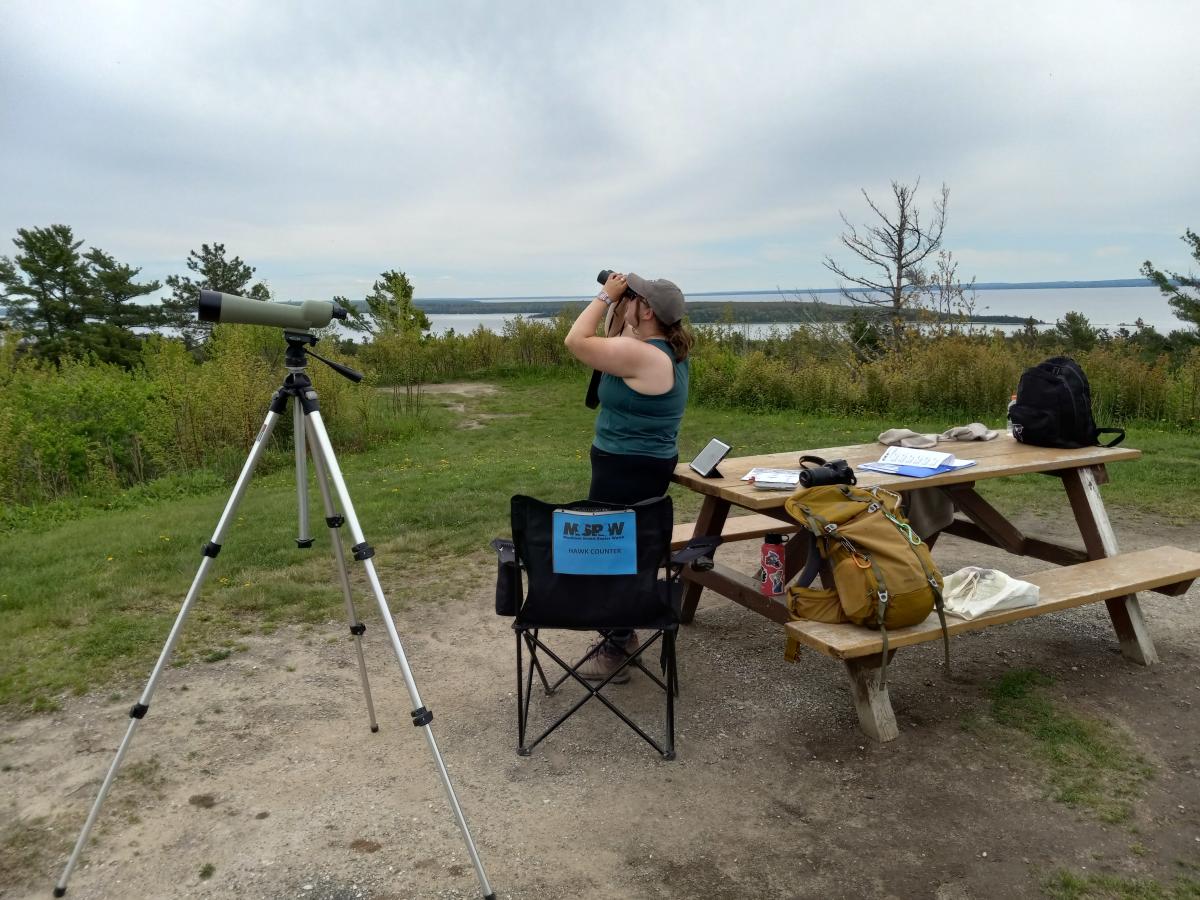Not only is spring when the new visitor season begins on Mackinac Island, but it’s also peak migration for raptors headed north. Did you know that upwards of 70,000 hawks, eagles, falcons and other birds of prey fly through the Straits of Mackinac from March through early June?
That number includes the highest volume of golden eagles east of the Mississippi River and the most red-tailed hawks in all of North America!
While many of these birds are counted at a Mackinac Straits Raptor Watch site in Mackinaw City, several thousand are documented from Fort Holmes atop Mackinac Island. In fact, from early March through early June, you can read reports from the Mackinac Island count site on hawkcount.org, the home of the Hawk Migration Association of North America’s Raptor Migration Database.
Observing The Spring Migration In Person From Mackinac Island
Even better than following the count from afar, you can see the raptors in person by visiting Mackinac Island in the spring and heading up to the Hawk Watch site at Fort Holmes. There, an official bird counter equipped with binoculars and a spotting scope tallies the number and kind of migrating birds seen overhead. The public is welcome to observe and ask questions.
Just head to Mackinaw City or St. Ignace and hop on a boat operated by one of Mackinac Island’s two ferry companies, Shepler’s Ferry or Arnold Transit. Once you arrive on the island, you can walk, bike or catch a horse-drawn taxi up to Fort Holmes, which sits some 325 feet above lake level.
From there, you can get a panoramic view of the island springing to life against the beautiful blue backdrop of the water that stretches to the horizon. You’ll see and hear lots of birds – from spring songbirds who live on Mackinac Island to migrating raptors who fly by in ones and twos or even kettles by the hundred.
Why Mackinac Island Is A Good Spot To See Raptor Migration
The Mackinac Straits Raptor Watch conducts the spring count to track year-by-year numbers of birds passing through the Straits on their way to breeding grounds farther north. The data provides a baseline that can alert wildlife conservationists to possible problems if a particular count falls well below long-term averages.
The Straits of Mackinac is an ideal spot to count migrating birds because that’s where they tend to cross between Michigan’s Lower and Upper peninsulas. The raptors like to soar on thermals, which basically are levels of warm air rising up from the ground. There are no thermals over water, however, so the birds stay over land as long as possible. That funnels them toward the Straits, which is just five miles across at its narrowest point.
While most raptors cross the Straits near the Mackinac Bridge, some 10,000 to 15,000 birds island-hop their way north. Those are the hawks, eagles and falcons seen at Fort Holmes.
RELATED MACKINAC ISLAND BLOGS:
